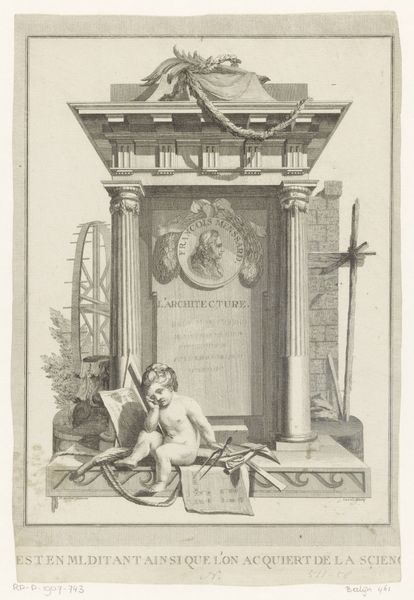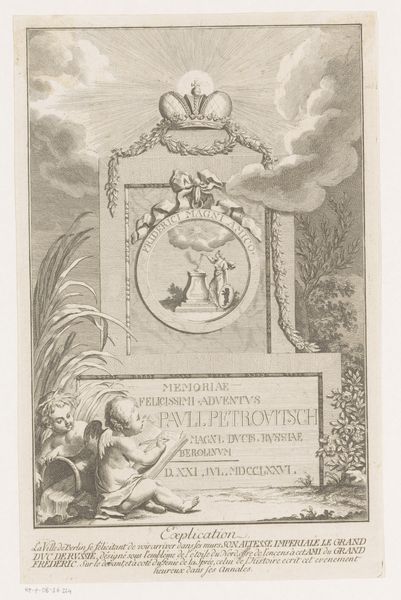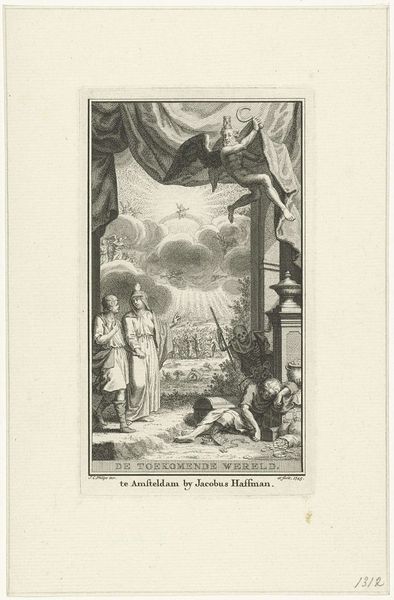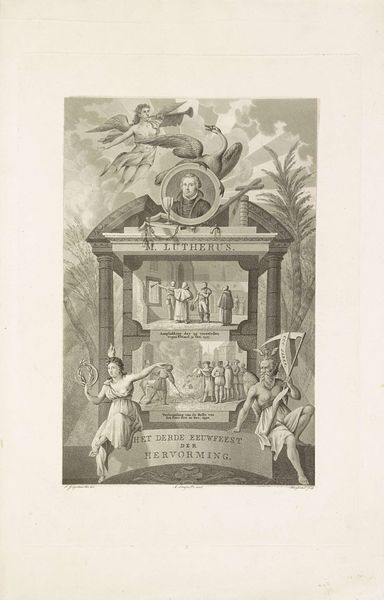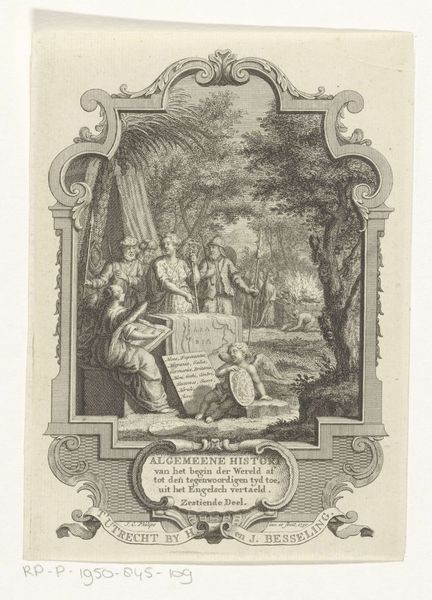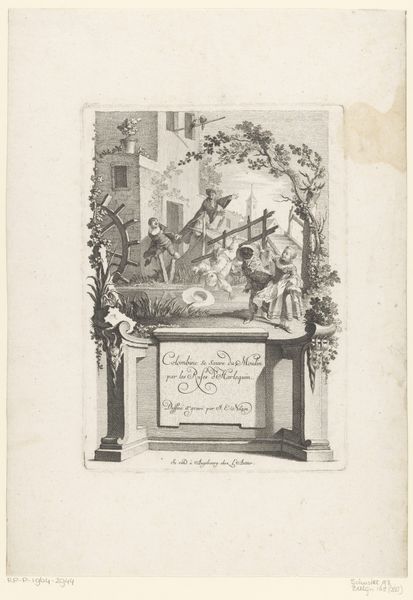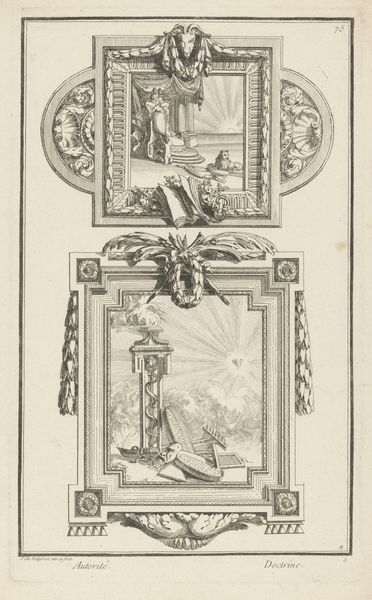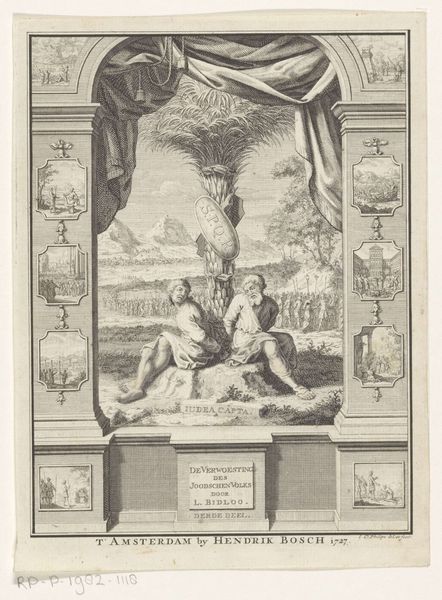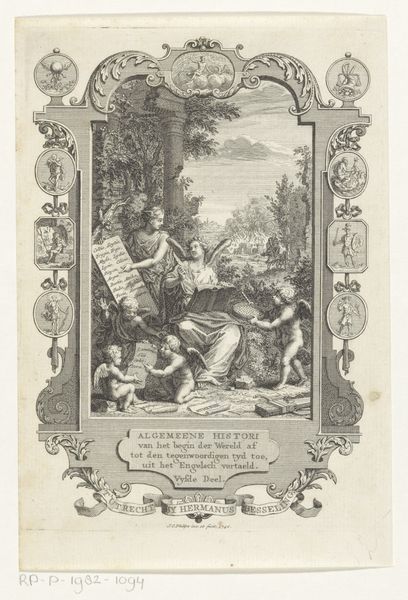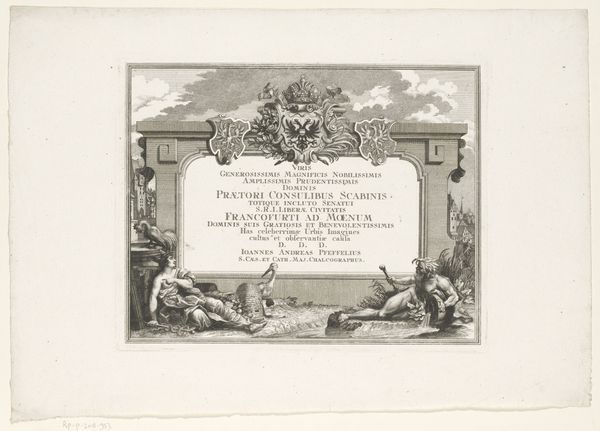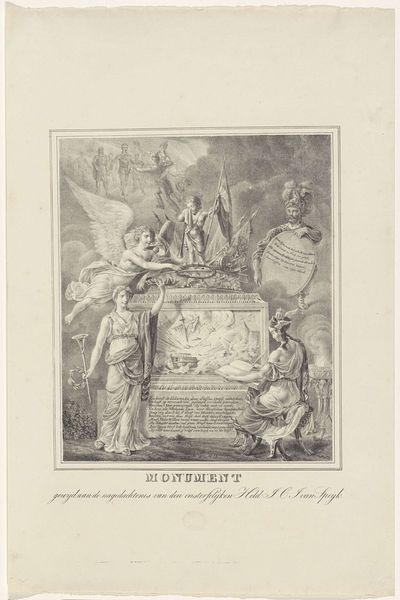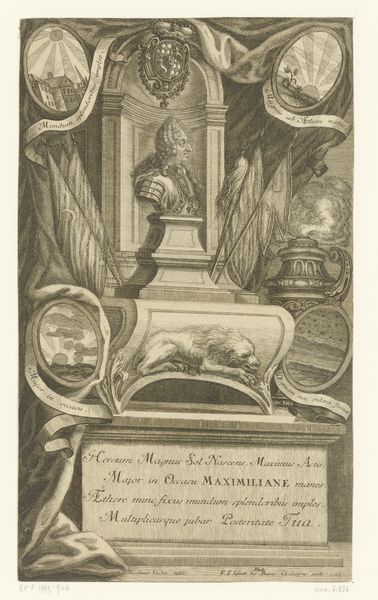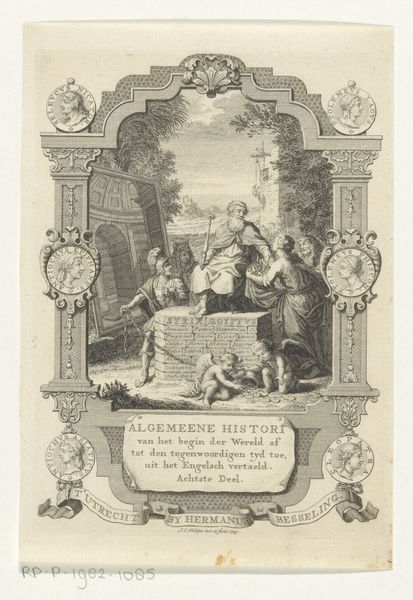
drawing, print, etching, engraving
#
drawing
#
baroque
# print
#
etching
#
landscape
#
engraving
Dimensions: height 315 mm, width 186 mm
Copyright: Rijks Museum: Open Domain
Curator: This print, attributed to Pieter Sluyter, is called "Riviergod op poort" or River God on a Gate, created around 1704. It's an engraving and etching, currently held at the Rijksmuseum. Editor: It strikes me as quite a powerful image, yet meticulously detailed. There’s a very dominant masculine figure lounging above an ornate, almost crumbling, gateway. I'm immediately drawn into that contrasting depiction. Curator: The reclining river god is visually dominant and draws directly on Baroque conventions of power and personification. But I think the architectural setting speaks volumes here, the idealized Italian landscape viewed through this gate. Editor: I see the Italian landscape in the background; almost framed as a promised, pristine land. It is visually enticing as much as that stone structure presents some barriers. Can you tell me more about how its setting and materials contribute to its message? Curator: Considering its function, that might explain its appeal. This image most likely served as the title page of a book concerning the Antiquities and Histories of Italy. The imagery used emphasizes a classical authority; a historical legitimacy enhanced through careful depiction and allegorical figures, but with just enough overt detail of local landscapes to maintain relevancy for local consumption. Editor: That certainly deepens the context for me. So it is functioning as more than decoration. It presents this gateway to a new way of understanding a culture. The fact that there is what appears to be a classical male figure in this powerful position almost renders the setting to the past, making me curious as to what Italy looked like in 1704 when the print was made. Curator: Exactly! The contrast here lies in its connection between the grand classical narrative and an emerging local context. This is what fascinates me with these prints from this era: these artists managed to capture a shifting perspective on cultural and historical significance through a combination of imagery. Editor: Looking again, I agree. It does feel very transitional, as if this gateway isn’t just a literal entry point, but a philosophical one too. Thank you, this piece is giving me a lot to think about.
Comments
No comments
Be the first to comment and join the conversation on the ultimate creative platform.
